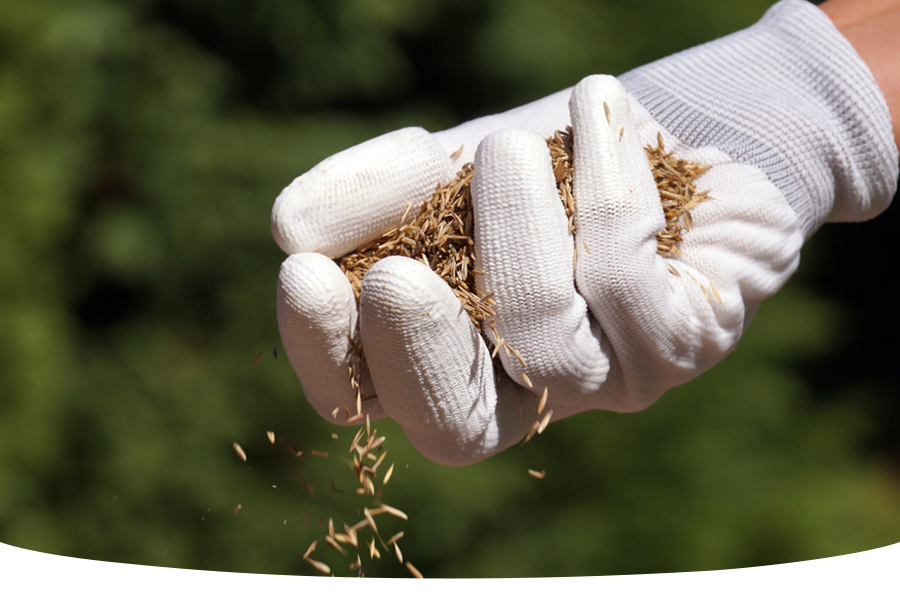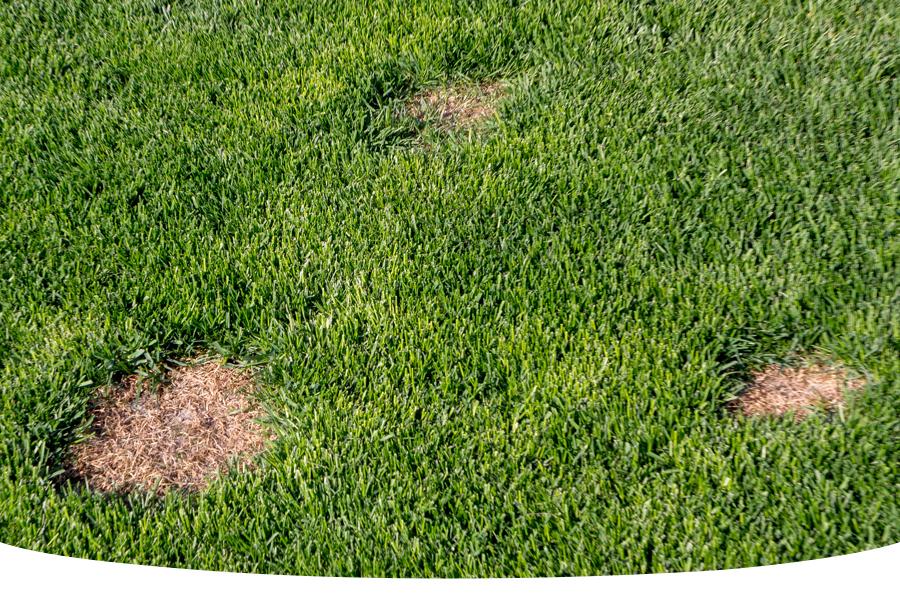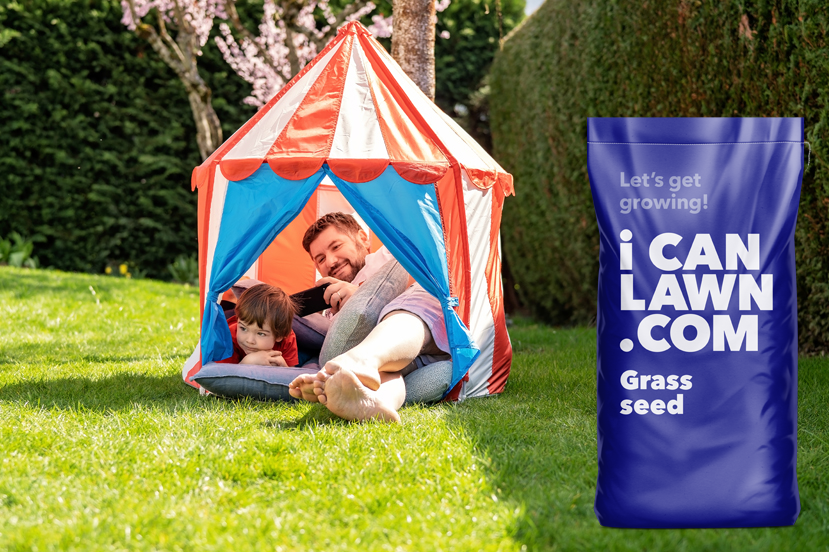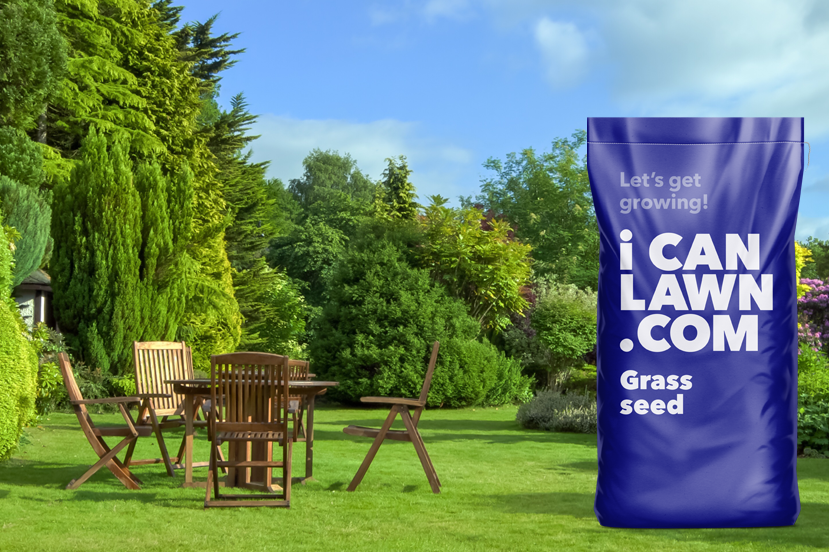How to repair a lawn
It’s almost time to switch our indoor fires for our outdoor fire pits, and to move from the oven to the BBQ. Summer evenings in our gardens are fast approaching, and if you’re anything like the team at iCANLAWN.com, you will be eagerly awaiting those days! So, we share some tips on how to repair a lawn and ensure your summer gets off to a good start!

As the weather is just beginning to change, now is a great time to take a look outside and identify any repairs that might need to be done to your grass before your garden becomes the host for the next few months. Keep reading for some helpful advice on how to repair a lawn and your garden gleaming for summer!
If you’re lucky, and we mean really lucky, you won’t have any repairing to do. But lawns are a labour of love; more often than not, they will require a bit of TLC to keep them looking great.
Firstly, you need to find out what you need to do to repair your lawn…
Why is my lawn thinning?
This has to be one of those most common lawn occurrences. While it isn’t the most aesthetically pleasing thing to happen, a thin lawn isn’t the worst problem you can encounter. It can simply mean that your lawn is a much-loved part of your home and has become thin due to wear and tear over time.
To help fix any thinning areas of your lawn, you could opt for lawn food, to help improve the overall thickness of your lawn. At this time of year, you could either use our Oh So Green lawn food or our All Summer Long lawn food. Both of these will give your lawn a healthy boost of nutrients that will help to revitalise the thickness and appearance of your lawn. Our Oh So Green lawn food will get to work over the course of six weeks, so it’s perfect if you want a quick fix. Although our All Summer Long lawn food will do the same for your lawn, it works over a longer period of 16 weeks to feed and nourish your lawn for longer.
Repairing pesky patches on your lawn!
Similar to a thinning lawn, patches aren't the worst thing to see happen in your garden and are easy to fix. Patches or bare spots on your lawn will normally appear after prolonged wear and tear, dog urine or pests and diseases. With the right knowledge on how to repair a lawn, these patches can be easily fixed, and your garden will be ready for the summer in no time.
We recommend carrying out some overseeding on the areas of your lawn that have become bare and patchy. Conveniently, you can use any leftover seed you have from sowing your lawn when overseeding. But if you need to get another lawn seed, be sure to consult our guide on how to choose the best lawn seed. This will ensure that you choose a seed mix that is fit for purpose and one that will flourish in your garden.
The process of overseeding is straightforward and easy to complete, and to make things even easier; we have a video guide on how to overseed your lawn, which can be followed for the best results.
For more tips and tricks on repairing patchy or thinning lawns, make sure to read our blog on how to repair patches on your lawn.
Help, my lawn is yellow!
A yellowing lawn can be caused by several things, and each garden will be different. So, it’s best to find out what is causing your lawn to turn yellow before trying to fix it.
Your lawn is hungry
We recommend feeding your lawn at least twice a year to help maintain a level of nutrients that will help your lawn to stay green and fight off any diseases that may pop over throughout the year. A yellowing lawn could be due to a lack of nutrients being fed into your lawn, so a quick feed will help to reverse those effects.
Dog urine
All dog urine is incredibly high in nitrogen, and nitrogen can leave your lawn scorched or yellow. Unless you train your dog to go elsewhere, your best bet at repairing dog urine patches is to try and water over those areas straight away or opt for a hard wearing lawn seed like our Tough Stuff Lush Lawn.
While these are two of the most common reasons, there are others like pests, poor mowing or drought and flooding that can cause yellow patches across your lawn, so make sure to follow our blog and find out why your lawn is turning yellow and how to fix it.
Is that a pest?
While we would love a lawn that didn’t suffer at the hands of pests every so often, our lawns are bursting with living things, and so pests are just part and parcel of that. But there are sometimes when they can overstay their welcome and start to cause problems…
Leatherjackets and chafer grubs are typically the most common lawn pests that you will come across in your garden. If they are found and treated early, they can cause minimal disruption, but if they are left untreated, you might be left with a bit of a mess. Our guide to lawn pests will help you to identify which one is taking over your lawn and how you can start to treat them.
How to get rid of weeds when repairing a lawn?
Weeds can be hard to spot because they blend in with your lawn until they have spread and grown significantly. But if you have a keen eye for your lawn and know how to repair it, you can spot them and get rid of them almost as soon as they show their heads. The most common weeds you will see in the UK are couch grass and poa annua. These weeds are easy to treat, so your lawn can return to its former glory before you know it!
3 IN 1 Rescue is a good way to repair a lawn from weed damage
For larger areas, we would recommend using our 3 IN 1 Lawn Rescue. It’s a fast-acting product that will remove weeds and moss in the first two weeks and then continue to keep your lawn green for the next four weeks with a beneficial blend of powerful nutrients!
If you have stuck with us until now, hopefully, you know how to repair a lawn, have identified what is wrong with your lawn and how you can start to fix it in time for the summer months. You can also find some more spring lawncare tips over on our seasonal guide pages.







